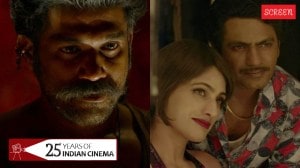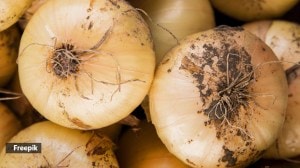Fishing for success
In May this year, fishermen watched a giant, 17-metre contraption being lowered into the rough sea off the coast of Visakhapatnam.

In May this year, fishermen watched a giant, 17-metre contraption being lowered into the rough sea off the coast of Visakhapatnam. This, they were told, was a ‘cage’ for fish farming. Fish in cages, they wondered, as India’s first ‘open sea cage project’, an eco-friendly method of fish farming, was fabricated and launched in Visakhapatnam by the Central Marine Fisheries Research Institute (CMFRI). The project, backed by the Ministry of Agriculture, is expected to produce high-quality yield, and if successful, could usher in a revolution of sorts along coastal India.
“We have been talking and planning cage culture for years and have seen it work in China, Japan and Indonesia. But for the first time, we decided to launch the project off Visakhapatnam and I think it is going to be a great success,” said Dr. G. Syda Rao, principal scientist and scientist in charge, Regional Centre of CMFRI at Visakhapatnam.
A CMFRI team, led by its director Dr. Mohan Joseph Modayil set about designing India’s first open sea cage, keeping in mind the rough Bay of Bengal. “That is the advantage other countries have. Their seas are much calmer and quieter than the Arabian Sea or the Bay of Bengal,” said Dr. Rao.
The CMFRI finally decided to go ahead with its cage adventure, risking rough seas, cyclonic conditions and high-speed winds. In May this year, the first indigenously designed cage, costing Rs 6.5 lakh, was installed at a distance of about 350 metres from the Vizag beach and at a depth of 12 metres.
“The cage is made of two circular, high-pressure, high density polyethylene (HDP) pipes of diameter 210 mm. The cage itself is of 17 metres (outer ring) and 15 metres (inner ring) diameter, with the two metres being provided for the staff to walk around and work. The inner tube is again connected to elevated HDP tube ring of 110mm diameter at a height of about 1 metre with 16 T joints and 16 one meter pipes to support the structure,” explained Dr. Rao.
A bird net at the top prevents bird attacks. The net is tied to the inner ring and extended to the elevated tube to prevent the fishes from jumping out of the cage. An outer predator net prevents big fishes from entering the cage. The bottom of the net was kept in a position with suitable dead weights to maintain the cage structure.
The total weight of the cage was 1,500 kg and it was fabricated on the beach and launched manually. About 8,500 ‘Asian sea bass juveniles’, purchased from Mayiladuthurai in Tamil Nadu, are now being reared in the cage. “The cage experiment has excellent scope to increase the production of high-valued marine fish especially in view of conditions today when fishermen are returning with low catch.
According to Dr. Rao, each cage had a capacity to rear about 10 tonnes of fish yield and two cycles were possible in a year. Eventually, the CMFRI will also rear seer fish and pomfret which are in great demand in domestic markets. “The best thing about cage culture is that customers can buy live fish which is highly valued rather than preserved fish,” he said.
The CMFRI estimates that with the two cycles of rearing, the fishermen can get back their investment in a year’s time. With the quality of seeds and feed being monitored, the fish can reach a weight of 750 gm to one kilogram, which cost about Rs 150 in the domestic market.
“Of course, since this is our first trial, we have been facing some problems. But we are correcting them along the way. This is a cyclone-prone region and the cage has to withstand winds at speeds of 60 to 70 km an hour. Keeping this in mind, we have increased the upgraded the quality of the material by using HDP which can withstand high pressure. We are also providing more anchorage to the cage and constantly improving the design and sturdiness to withstand rough sea conditions,” said Dr. Rao.
Local fishermen and private aqua-culturists have shown interest in the cages.



- 01
- 02
- 03
- 04
- 05




























